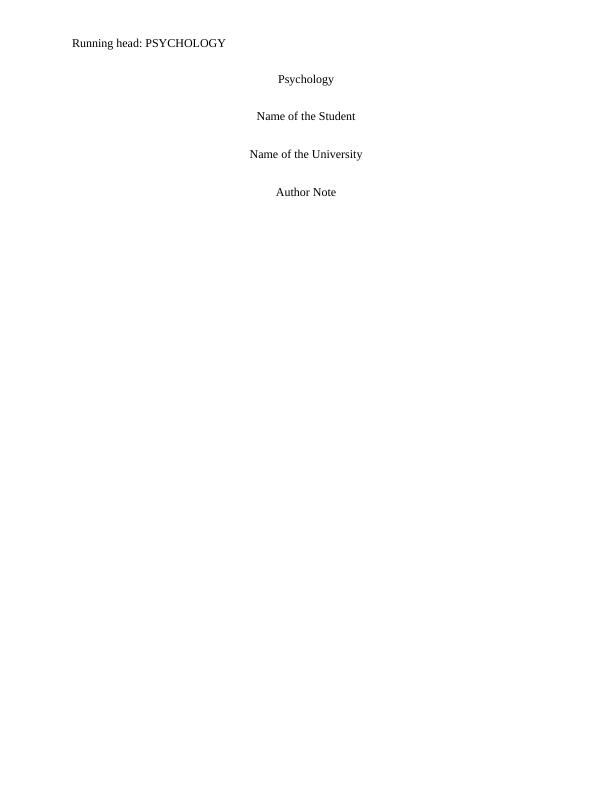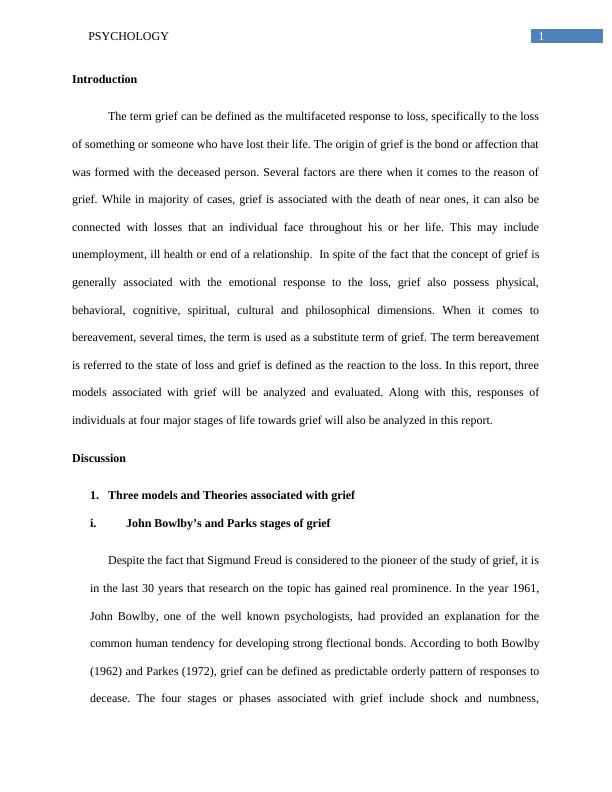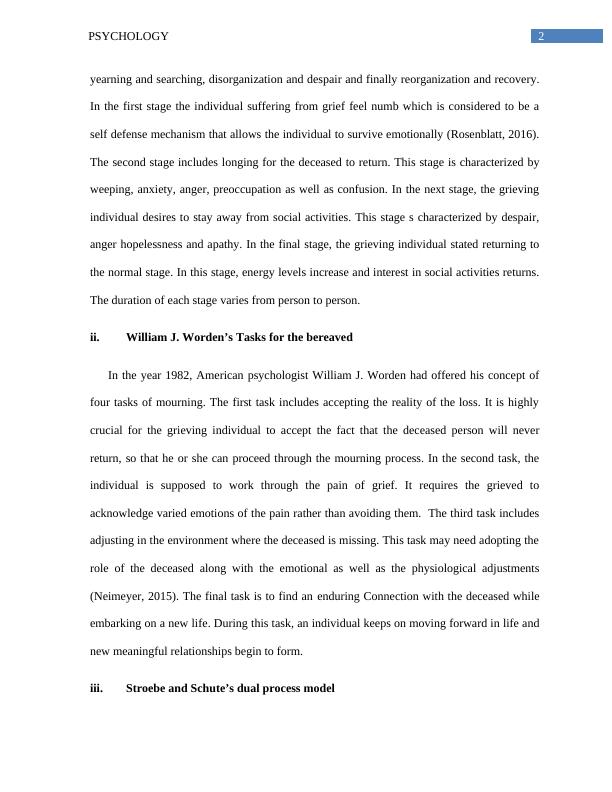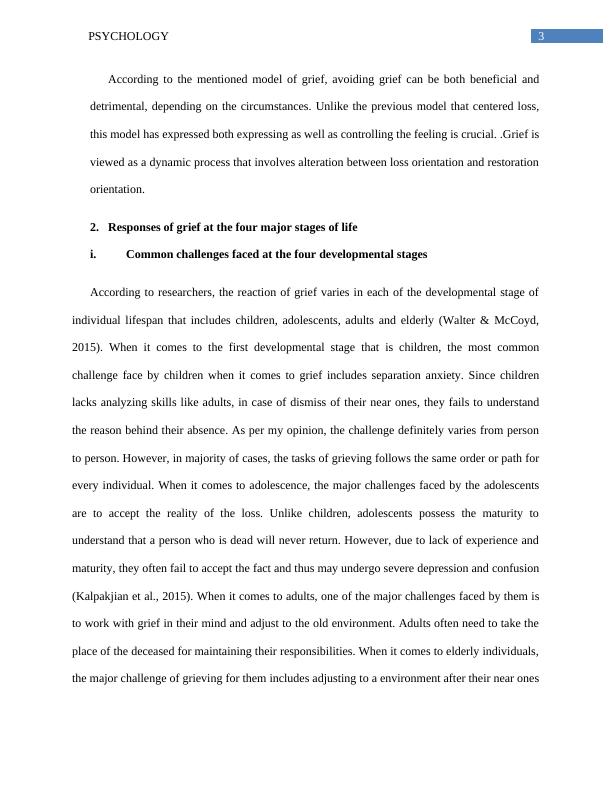Understanding Grief: Models, Stages, and Responses
Examine and discuss major models/theories of grief as experienced by people across the four major parts of the lifespan, that is, as experienced by children, adolescents, adults and the elderly.
12 Pages3377 Words104 Views
Added on 2023-04-21
About This Document
This article discusses the different models and theories associated with grief, including John Bowlby's stages of grief, William J. Worden's tasks for the bereaved, and Stroebe and Schute's dual process model. It also explores the responses to grief at different stages of life, from children to older adults, and provides tips on how to support individuals suffering from grief.
Understanding Grief: Models, Stages, and Responses
Examine and discuss major models/theories of grief as experienced by people across the four major parts of the lifespan, that is, as experienced by children, adolescents, adults and the elderly.
Added on 2023-04-21
ShareRelated Documents
End of preview
Want to access all the pages? Upload your documents or become a member.
A Comparative Analysis of Stage and Task Models of the Grieving Process
|5
|2414
|93
Grief Theories: Understanding the Different Approaches to Coping with Loss
|5
|1027
|489
Comparative Analysis of Stage and Task Models of Grieving Process
|5
|2684
|74
Perintal Loss GRIEF Theory and Its Application
|3
|478
|99
Grief And Bereavement | Mourning Assignment
|10
|2629
|247
Analytical Essay | Sociology
|16
|4474
|21




